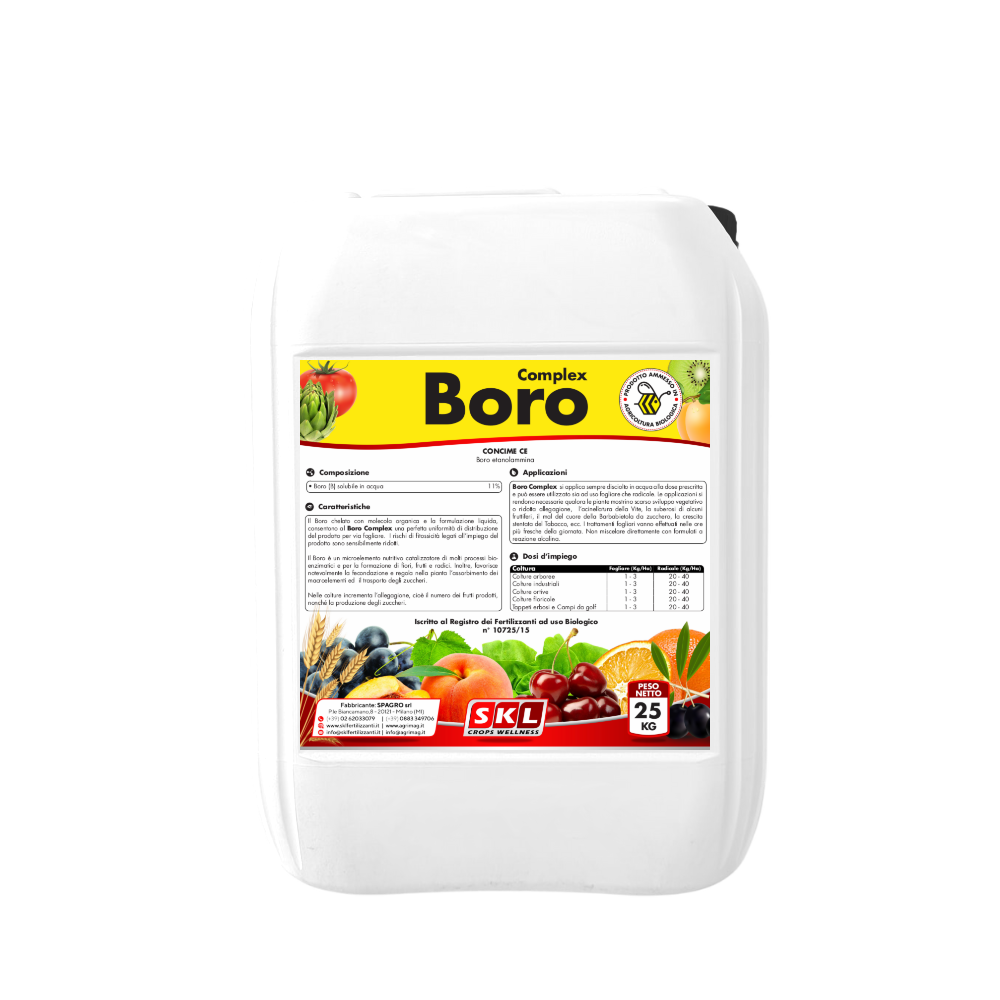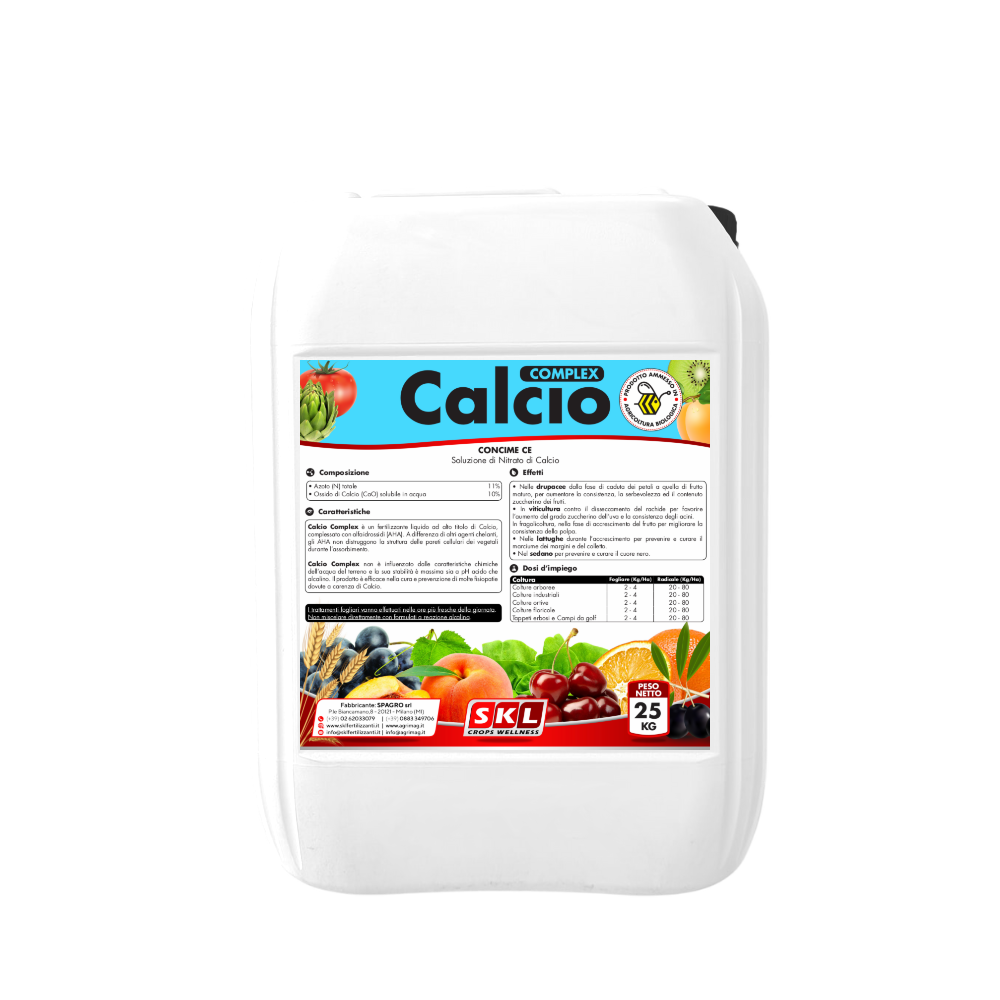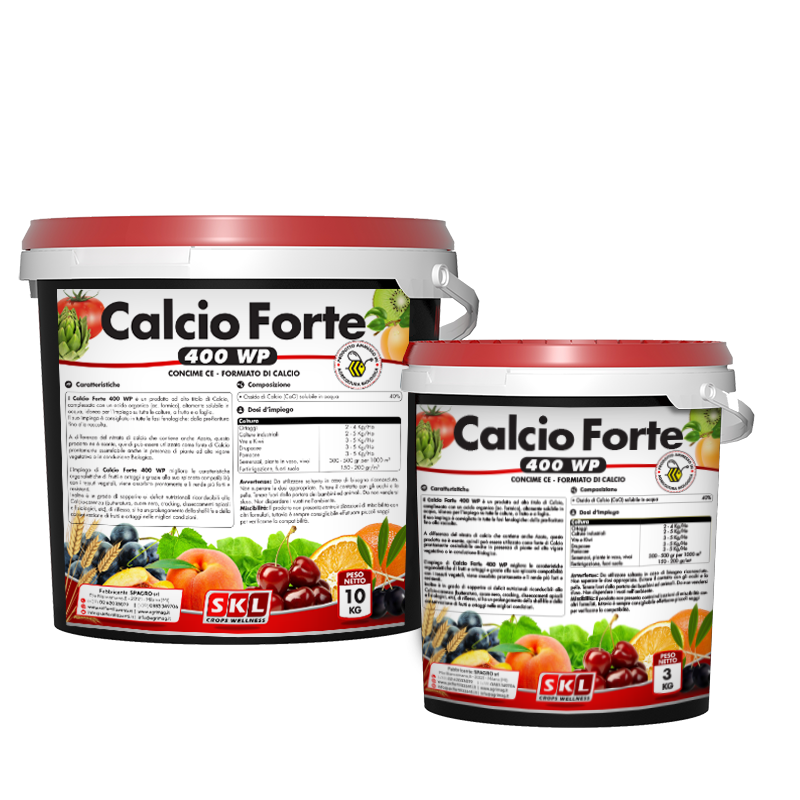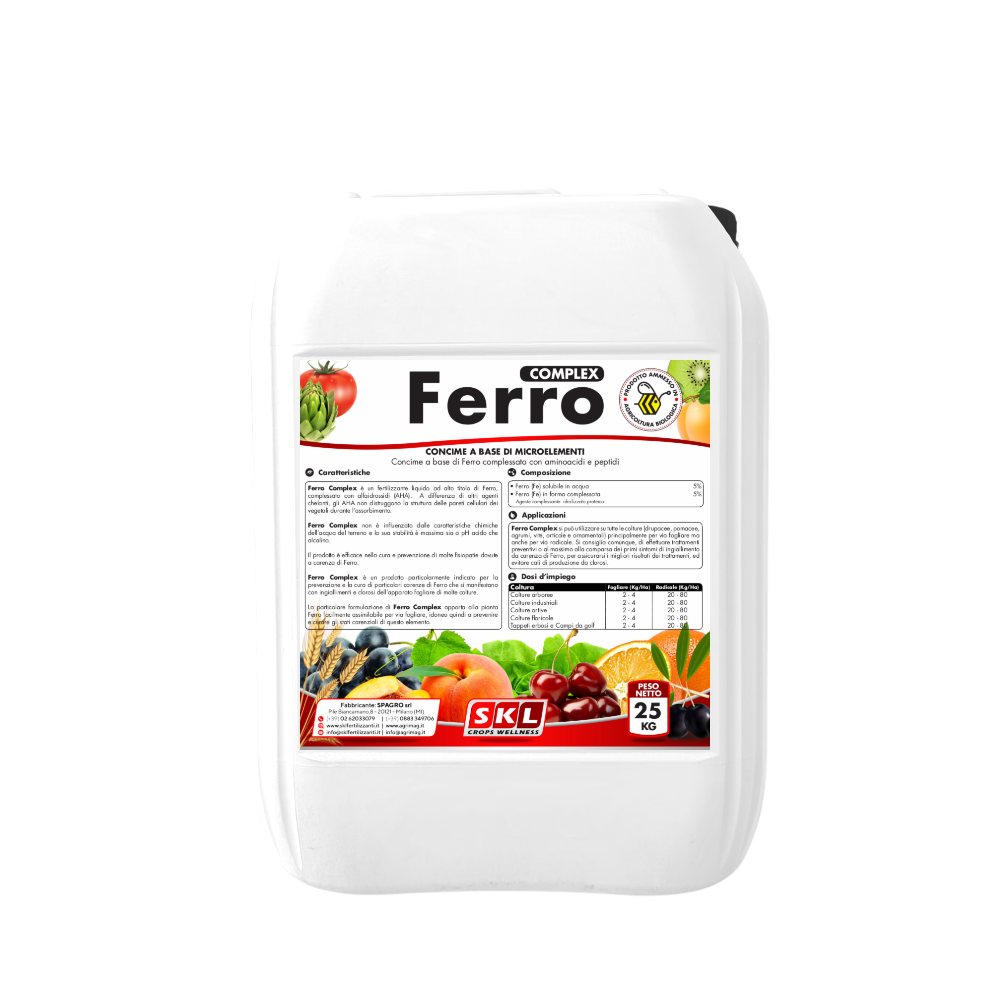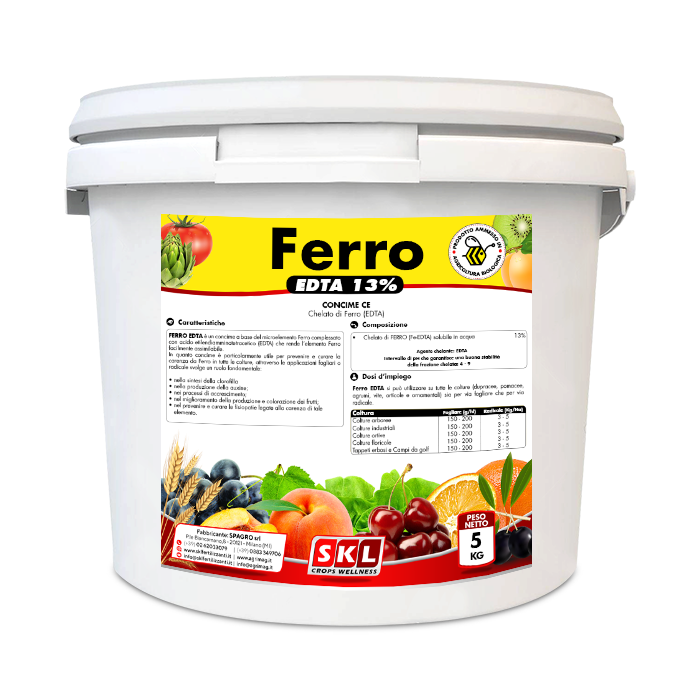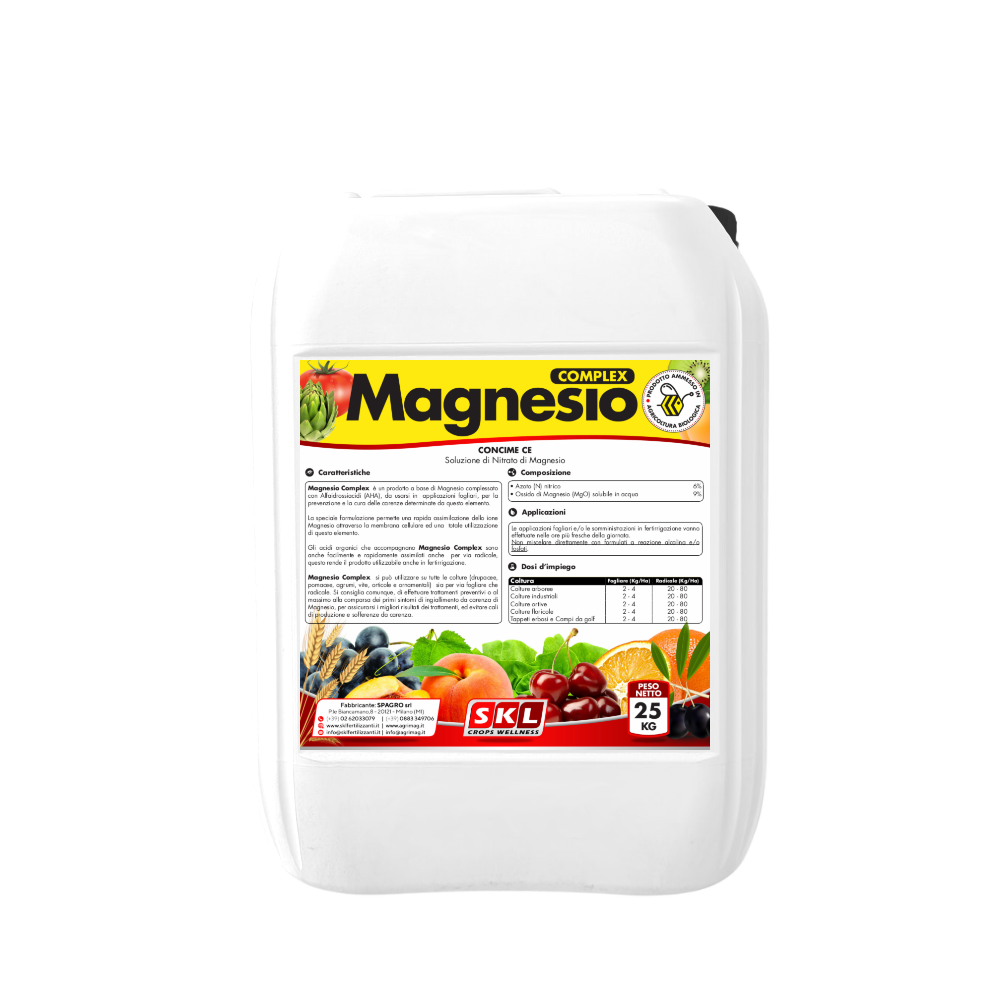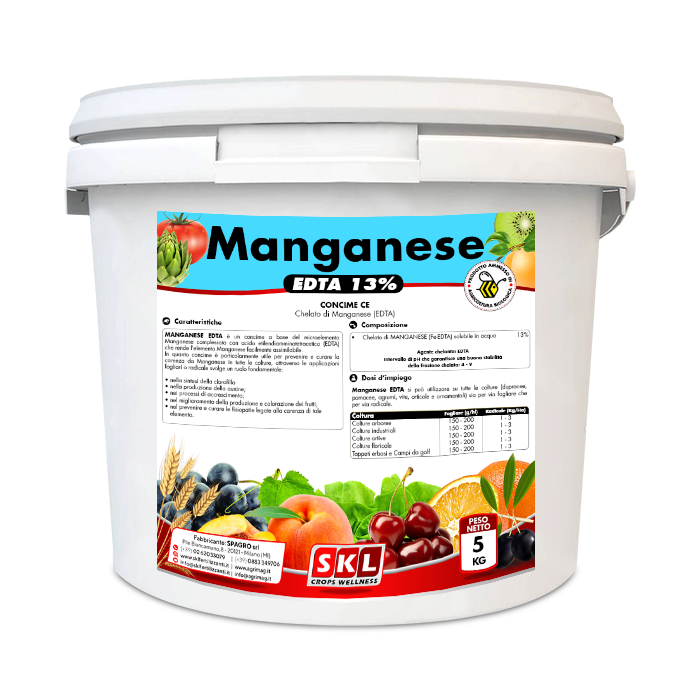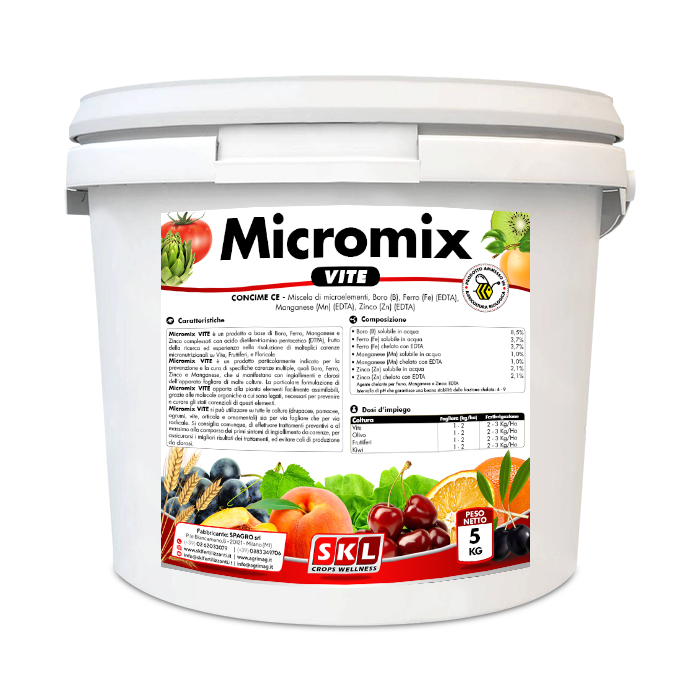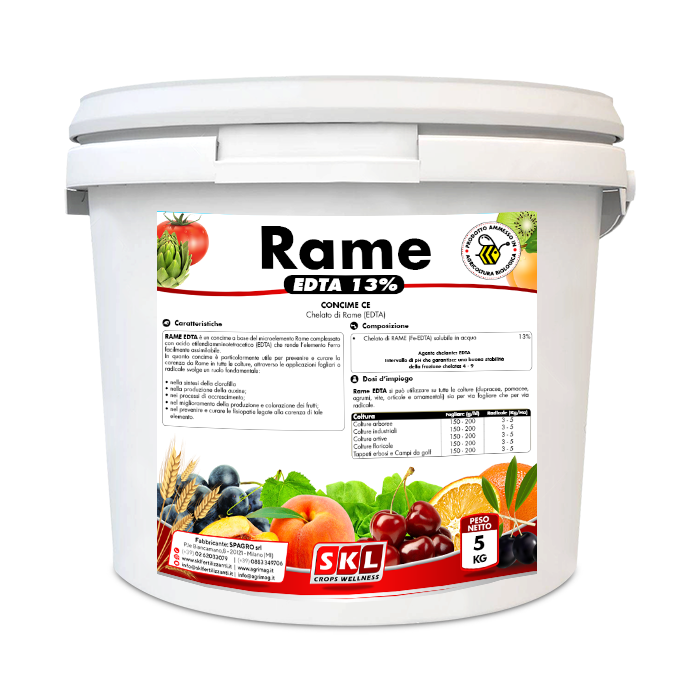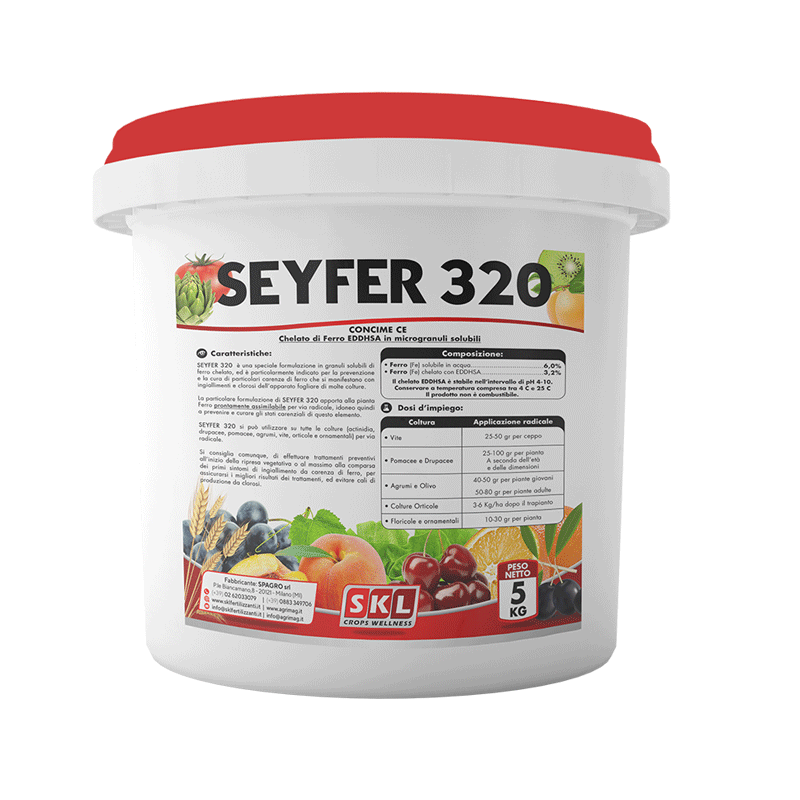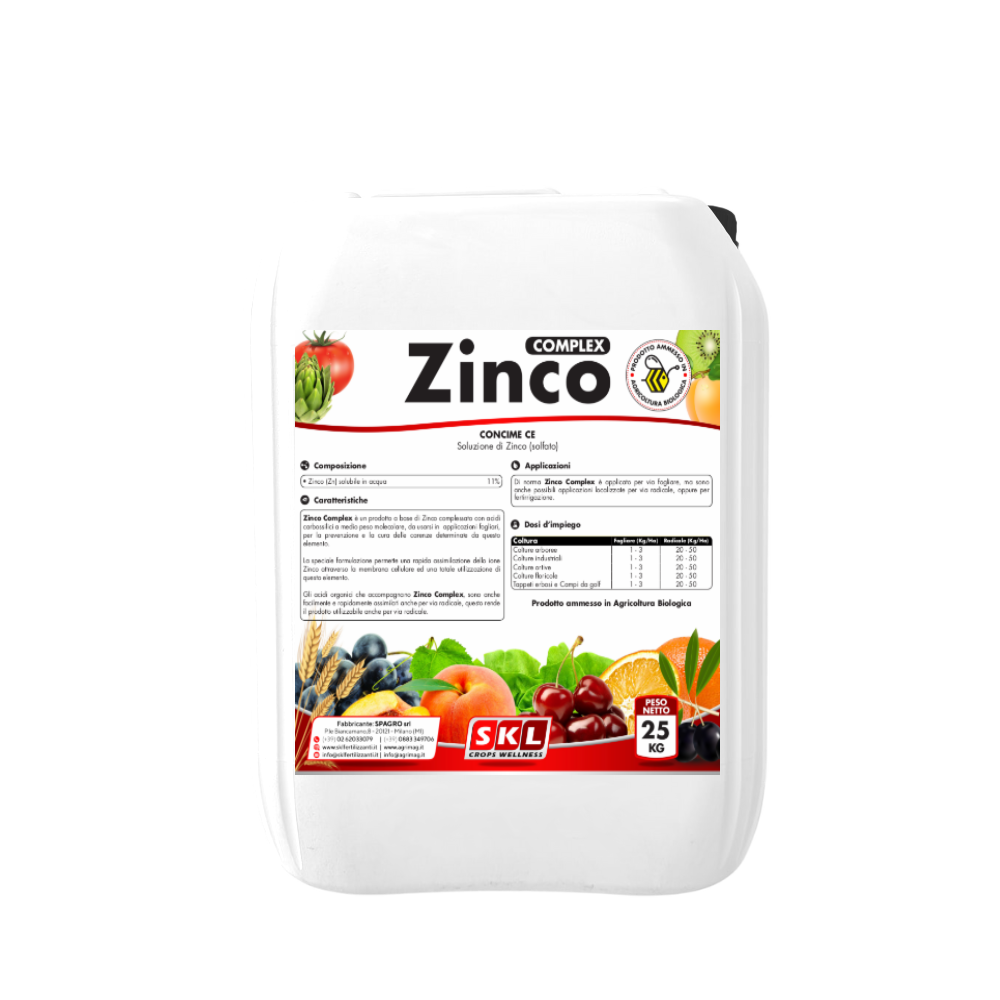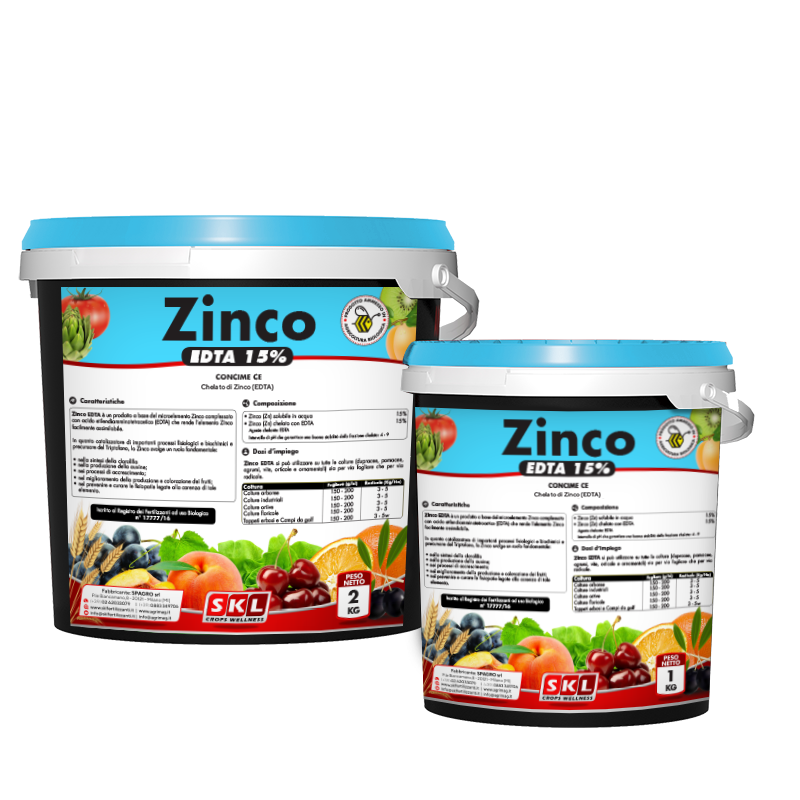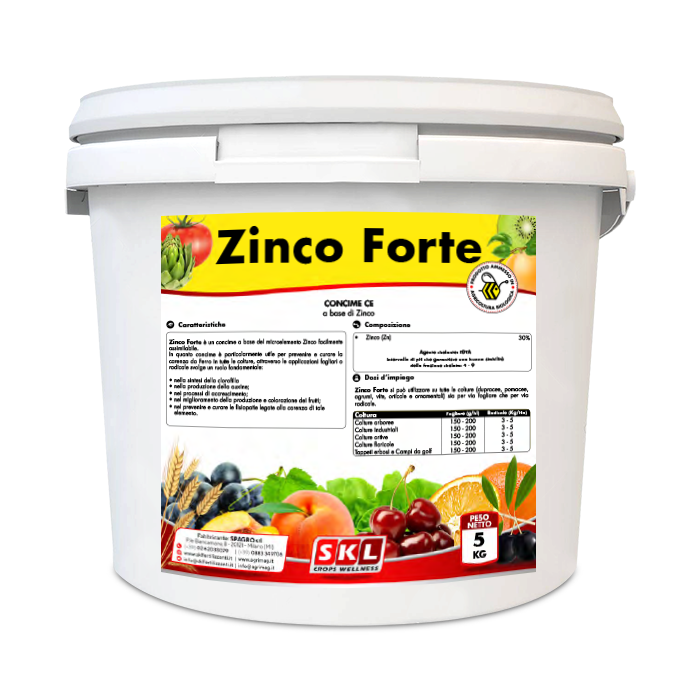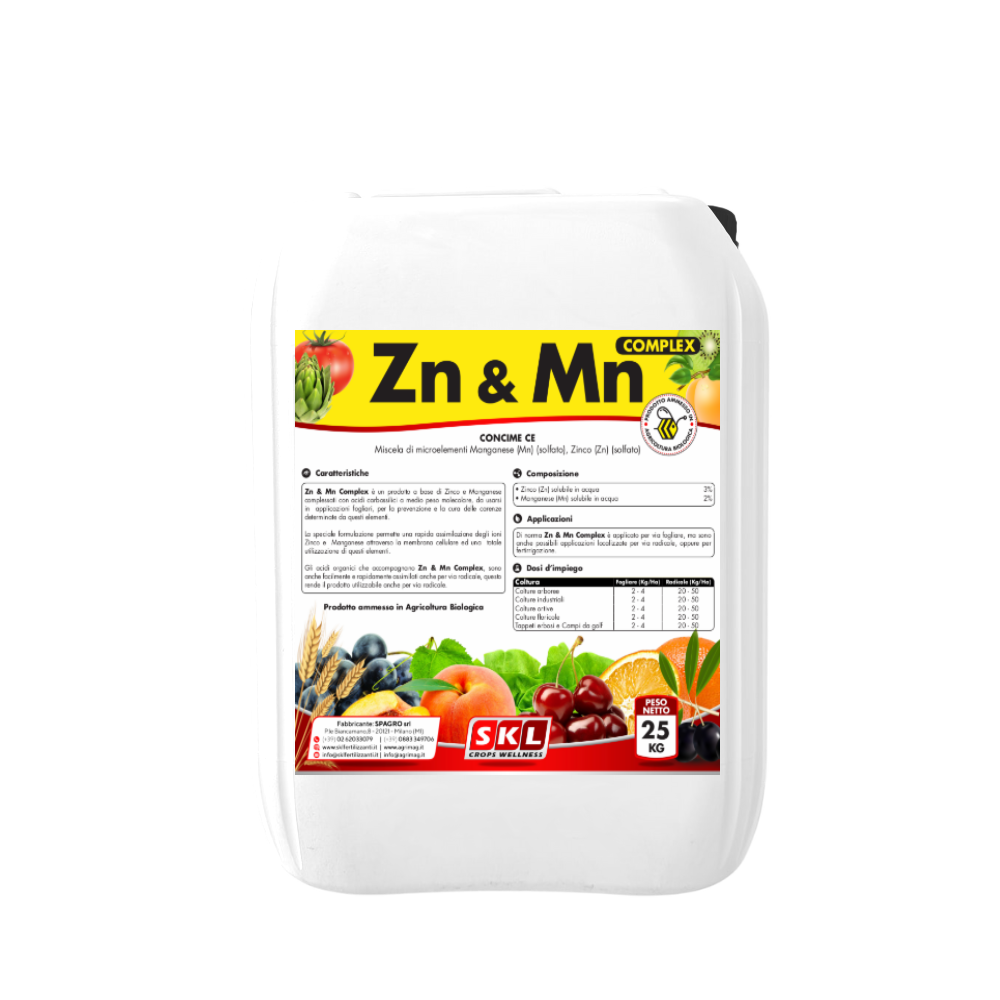Description
Seyfer 480 is a fertilizer based on iron chelate, specifically designed to prevent and treat iron deficiency in crops, especially in the most sensitive ones, such as Citrus fruits. It is a high-quality and highly soluble product; it prevents and treats iron deficiency and its manifestations of "iron chlorosis", which is the interveinal yellowing that often occurs in leaves, causing reduced growth and, consequently, poor flowering and fruiting.
Iron chlorosis is very often found in Citrus fruits (especially Lemon), Grapevine, Apple tree, Peach tree, Tomato, and Strawberry.
What is Iron Chelate used for?
Iron Chelate is a very important molecule that contains easily assimilable iron through the roots. Thanks to the high percentage of iron in the EDDHSA fraction, Iron Chelate provides the plant with iron quickly and for a prolonged period of time.
Iron is involved in various important physiological processes of the plant, such as photosynthesis, cellular respiration, and root absorption of important nutrients such as nitrate and sulfate.
Seyfer 480 is ideal for preventing and treating iron deficiencies.
Why use Iron Chelate?
Iron is a molecule that is very present in the soil, but its availability and assimilation depend heavily on the soil pH.
In a basic or sub-basic soil, iron is present but will be blocked by the soil, therefore not available in a form that can be used by plants.
To make iron available in a high pH soil, it will be necessary to acidify it, but often this procedure is difficult to implement and costly, and it can only be done in the long term.
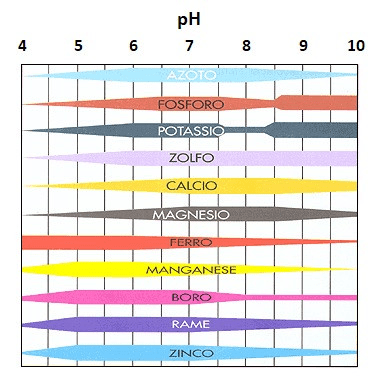
Taken from https://www.coltivazionebiologica.it/ph-del-terreno/
In these soils, where plants often show symptoms of iron deficiency, it is necessary to intervene with Iron Chelates. In this formulation, iron remains available in the soil for a long time and does not become insoluble or unavailable.
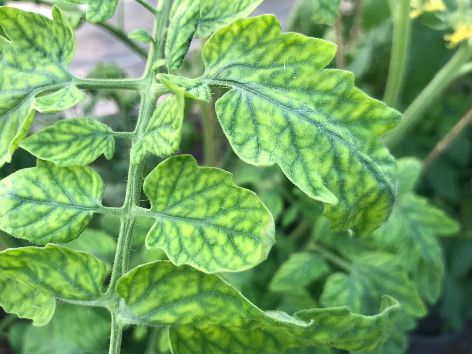
Taken from https://www.yara.de/pflanzenernaehrung/tomato/n/eisenmangel-tomaten-freiland/
Seyfer 480 at the recommended doses:
- Induces the synthesis of more consistent tissues;
- Anticipates flowering and harvest time;
- Allows for a better balance between vegetative and reproductive phases;
- Increases the size, color, and uniformity of fruits;
- Increases plant productivity;
- Improves the quality characteristics of the crops (sugar content, color, consistency, shelf life).
- Prevents and treats magnesium deficiencies by increasing chlorophyll production.
- Increases resistance to climatic adversities and water and heat stress.
- Increases resistance to pest attacks;
- Improves cell permeability, enhancing the ability to absorb nutrients
- Facilitates crop recovery when pests or adverse conditions (frost, drought, herbicide treatments, etc.) hinder the normal functioning of plants.
All of this results in:
- More balanced plant growth with higher quality and quantity productions;
- Greater fruit resistance;
- Better post-harvest preservation and increased transport resistance;
- Increased color, weight, and organoleptic characteristics of fruits.
The ideal Iron Chelate for Citrus fruits
Seyfer 480 can be used on all crops (stone fruits, pome fruits, citrus fruits, grapevines, vegetables, and ornamentals) through the roots.
What is the dosage of Iron Chelate?
The dosage of Iron Chelate depends on the type of crop and the degree of iron chlorosis.
- Grapevine 25-50 gr per plant;
- Pome fruits and Stone fruits 25-50 gr per plant depending on age and size;
- Citrus fruits and Olive trees 40-50 gr for young plants, 50-80 gr for adult plants;
- Vegetable crops 3-6 kg/ha after transplanting;
- Flower crops and Ornamentals 10-30 gr per plant.
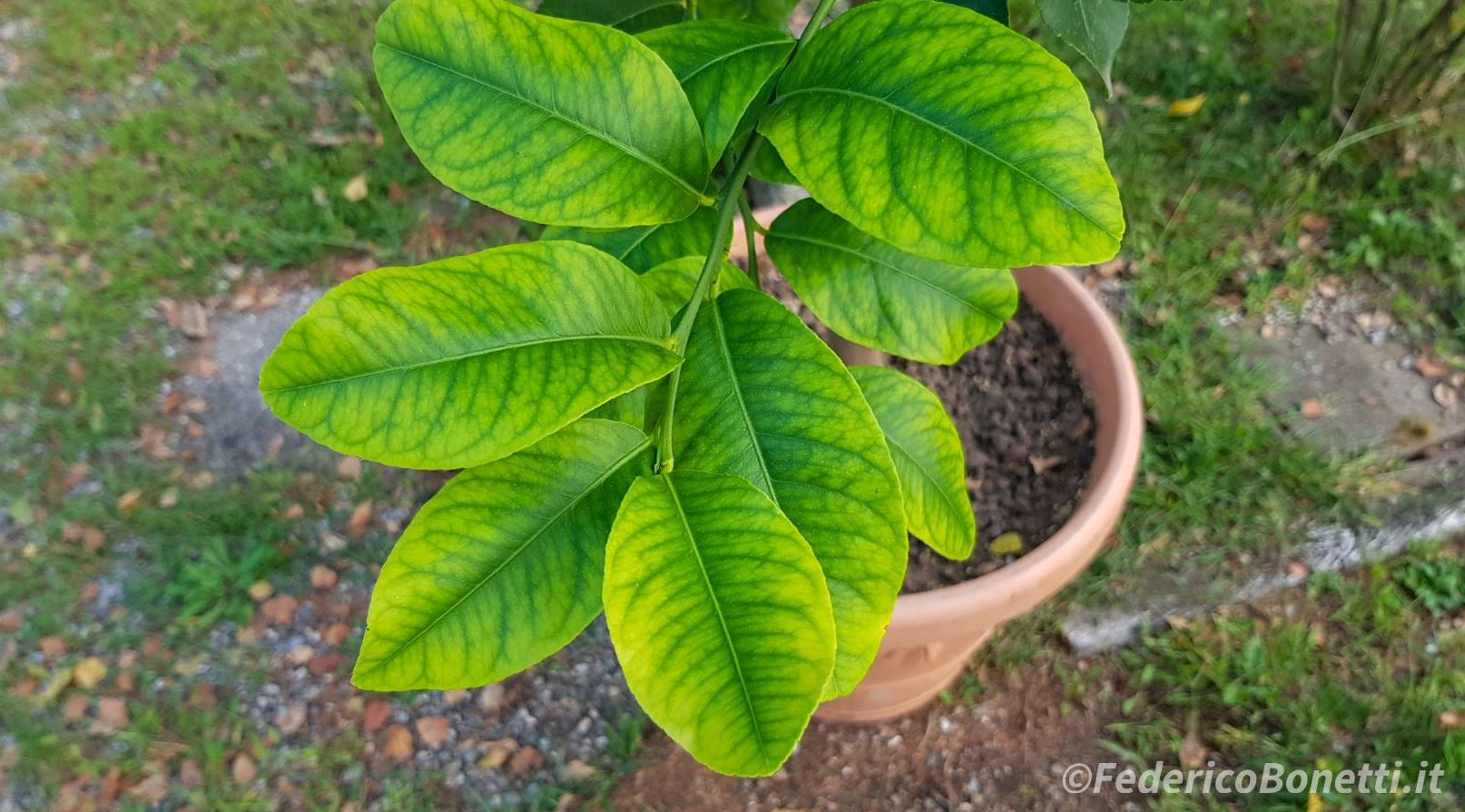
Taken from federicobonetti.it
How often to use Iron Chelate?
Iron deficiency is a very relevant physiopathy, as it could strongly affect the vegetative and, consequently, productive cycle of crops.
It is always recommended to carry out preventive treatments or, at most, when the first symptoms of iron deficiency, such as yellowing due to iron deficiency, appear, in order to ensure the best treatment results and avoid production losses due to chlorosis.
Dosage
| Crop |
Root Application
|
|
Grapevine |
25-50 gr per vine
|
|
Pome and Stone Fruits |
25-50 gr per plant
Depending on age and size |
|
Citrus and Olive |
40-50 gr per young plants
50-80 gr per adult plants |
|
Vegetable Crops |
3-6 kg/ha after transplanting
|
|
Floriculture and Ornamentals |
10-30 gr per plant
|


